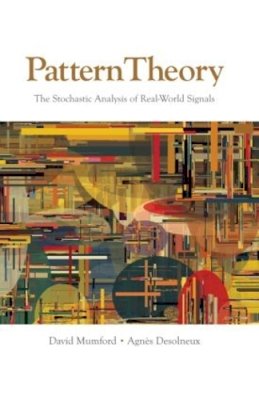David Mumford is a professor emeritus of applied mathematics at Brown University. His contributions to mathematics fundamentally changed algebraic geometry, including his development of geometric invariant theory and his study of the moduli space of curves. In addition, Dr. Mumford’s work in computer vision and pattern theory introduced new mathematical tools and models from analysis and differential geometry. He has been the recipient of many prestigious awards, including U.S. National Medal of Science (2010), the Wolf Foundation Prize in Mathematics (2008), the Steele Prize for Mathematical Exposition (2007), the Shaw Prize in Mathematical Sciences (2006), a MacArthur Foundation Fellowship (1987-1992), and the Fields Medal (1974). Agnès Desolneux is a researcher at CNRS/Université Paris Descartes. A former student of David Mumford’s, she earned her Ph.D. in applied mathematics from CMLA, ENS Cachan. Dr. Desolneux’s research interests include statistical image analysis, Gestalt theory, mathematical modeling of visual perception, and medical imaging.
required reading for any mathematician [involved] in the modeling complex and realistic signals —Marco Loog, Nieuw Archief voor Wiskunde, December 2011 The book comes with a large number of exercises and problems, some requiring computer programming. Thanks to these, it can be used as a textbook to support a quite original course that could be offered by a department of applied mathematics, computer science or electrical engineering. In fact, this excellent book targets and deserves a broad readership. It will provide precious and interesting material to anyone who would like to discover pattern theory and how it traverses across geometry, probability and signal processing. —Laurent Younes, Mathematical Reviews, Issue 2011m … a masterpiece. It is one of the best books I have ever read. … What singles out this outstanding book is an extremely original subject development. … This book is so exciting. It is a detective fiction. It is an inquiry into ‘real-world signals.’ In contrast to most detective stories, the beauty of the style is exceptional and meets the standards of the best writers. Art and beauty are present everywhere in this marvelous book. … The overall organisation of the book is also marvelous. … The authors are leaders in signal and image processing and this book is based on their extremely innovative research. Reading this book is like entering David Mumford’s office and beginning a friendly and informal scientific discussion with him and Agnès. That is a good approximation to paradise. —Yves Meyer, EMS Newsletter, September 2011 Pattern Theory covers six classic attempts at modeling signals from the human and natural world: natural language (written), music, character recognition, texture modeling, face recognition, and natural scenes. These applications, appealing to students and researchers alike, include fourteen 'crash courses' giving all the needed basics, exercises, and numerical simulations. ... a complete pedagogic tool at master or first-year graduate level. I endorse the publication of Pattern Theory, and will actually use it and recommend it to other researchers. —Jean-Michel Morel, CMLA This book is fascinating. It develops a statistic approach to finding the patterns in the signals generated by the world. The style is lucid. I’m reminded of Mumford’s exposition of Theta functions and Abelian varieties in his Tata lectures. The exposition is thorough. The authors provide the necessary mathematical tools allowing scientists to pursue an exciting subject. I’ve been running a seminar at MIT entitled ‘New Opportunities for the Interactions of Mathematics and Other Disciplines’ because I’m convinced that mathematics will move in surprising new directions. Pattern Theory, a decade’s effort, is a prime example. —I. M. Singer, Institute Professor, MIT

